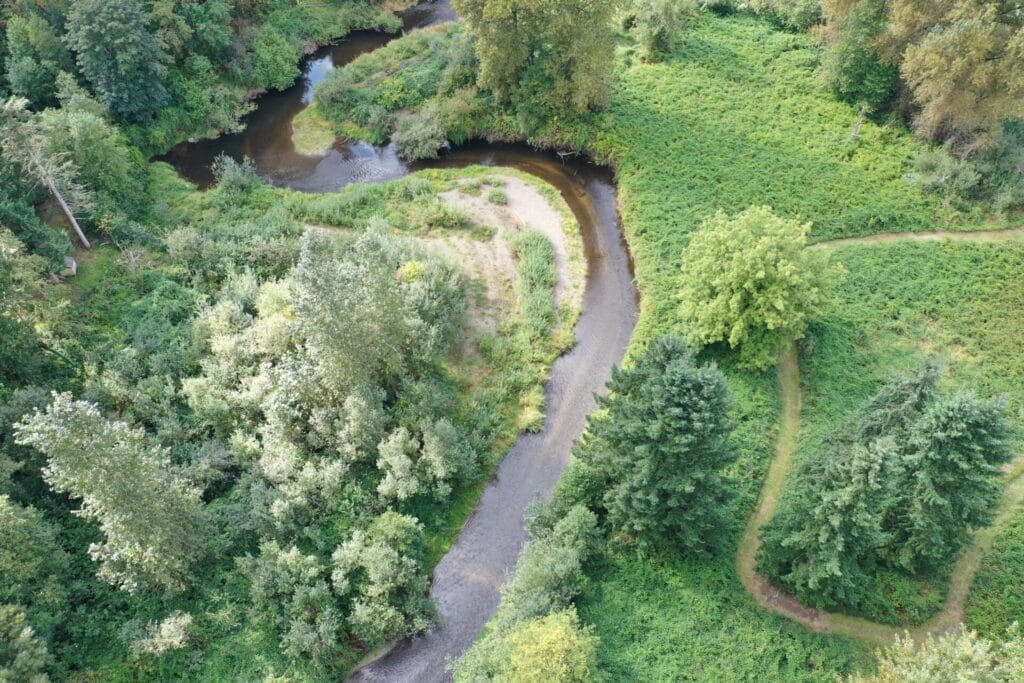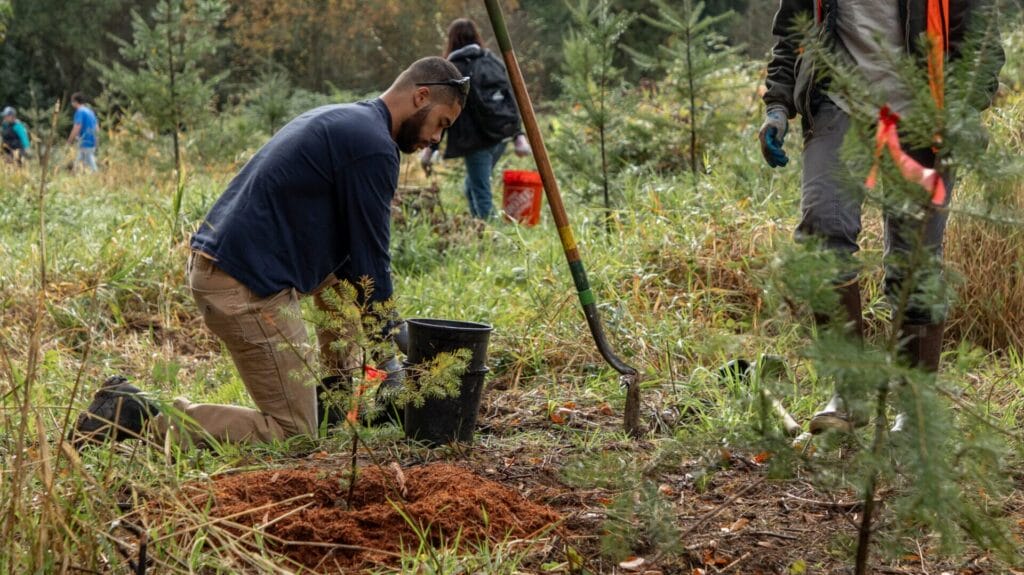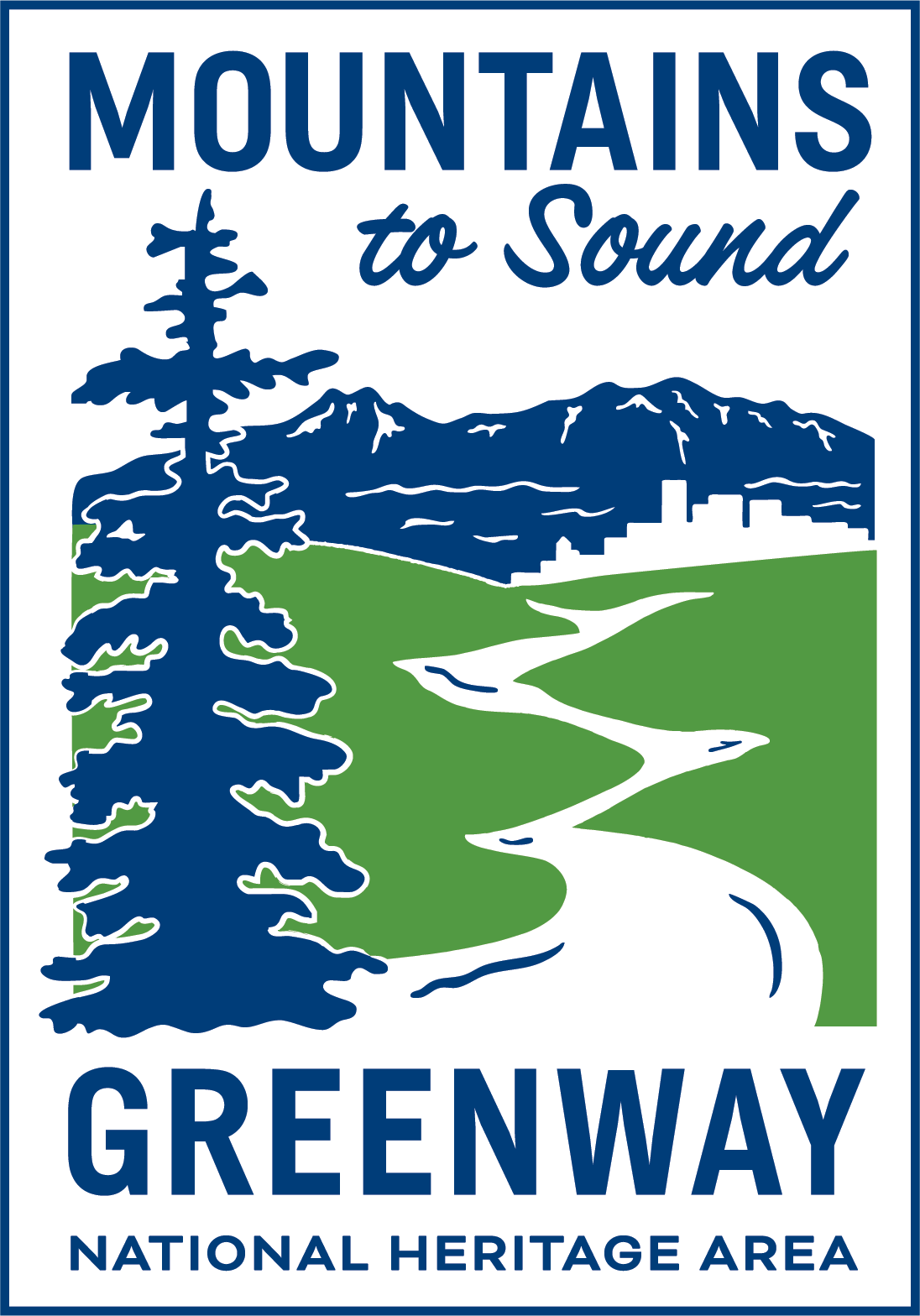Why It Takes Decades To Restore a Habitat
Long-term restoration is a practice that has been a part of human culture since time immemorial and continues today in the form of projects undertaken by Tribes, non-profits, government agencies, and dedicated volunteers. Along Issaquah Creek, the Mountains to Sound Greenway Trust and their partners have monitored and implemented incremental in-stream habitat improvements since 2005 at Lake Sammamish State Park. Over the past several decades, we have worked with the City of Issaquah, and King County to restore the creek, and with private landowners to remove introduced species of knotweed. The impact can be seen in significant improvements to water quality even as development in the area has increased. Kokanee, a culturally important salmon species that lives its lifecycle in Lake Sammamish State Park, are rebounding from the edge of extinction in record-breaking numbers. And it’s not just salmon, the reforestation of Issaquah Creek has led to the return of macroinvertebrates, like mayflies and caddisflies, that not only serve as living indicators of healthy biological conditions within vital waterways but are also an important part of the food chain.
These conditions have been made possible because of decades of invasive species removal and revegetation that have turned back the clock in an area that had been degraded through agricultural activity before it was designated as a park. But these improvements are being challenged by climate change and a growing lack of financial uncertainty that has been exacerbated by funding cuts from the current administration.

How Restoration Takes Shape Over Time
The nature of this work can be seen in the timescale of ecosystem adaptation which is a slow process that takes decades to centuries to strike equilibrium. The Greenway Trust has planted more than 50,000 native trees and shrubs around the creek, radically transforming the area with help from over 15,000 volunteers. Though stewardship can help create the conditions that kick-start the process, restoration takes decades of work to ensure ecosystems are kept in balance. This is due to how long it takes for planted native saplings to grow in order to provide benefits to streams. It can take 10 years for a cottonwood to grow large enough to shade a creek to keep it cool, and even longer to cast fallen branches into the creek for in-stream habitat growth, and that’s one of the fastest growing trees in North America. Blackberry, if not effectively managed, can return to previously cleared areas and grow over small trees, smothering them and starving them of light and resources. Without consistent maintenance, we have seen this happen during the pandemic when we faced a major setback in our volunteer program. Without volunteers, blackberry grew back in areas where it had been previously managed.

As woody material is introduced to the streams, microbial communities and nutrient cycles take time to rebuild for larger organisms to return. As non-native plants and animals can outcompete native species, restoration experts must continuously monitor the environment and make changes to their management strategy to keep up. As you move up in the food chain, species with longer lifespans or complex life cycles, like salmon, take generations to repopulate and re-establish their populations.
King County officials and various groups have monitored Issaquah Creek’s water quality, measured its levels of toxicity, and counted its bugs and fish species since 1979. Over decades, numerous studies have been done in conjunction with habitat improvements in Issaquah Creek to gauge how best to bolster an exceptional fish habitat that supports chinook, coho, and Steelhead Trout. The Greenway Trust, celebrating its 35th anniversary this year, has been committed to this long-term approach to restoration, recognizing that sustainability depends on a holistic, ongoing effort. In recent years, it has had to deal with setbacks due to rising temperatures, not just for habitats, but also for the staff that monitor them. Restoration efforts are woven around the schedule of wildfires that make it difficult for work to be done on the ground, rising temperatures have caused dryer-than-normal conditions, making it harder to keep saplings hydrated enough during the hot summers.
While the Greenway Trust is committed to continue adapting to these challenges to restore habitats in places like Lake Sammamish State Park, these efforts can be readily undone if funding continues to disappear.

The Impact of Federal Funding Cuts
Since the Trump administration began the mass firings within the USDA Forest Service, the Bureau of Land Management, and the U.S Fish and Wildlife Service, the Greenway Trust has felt the strain of the budget cuts in many ways. These agencies have historically monitored wildlife to restore habitats and support threatened species, but the staff members that remain are now forced to prioritize basic maintenance. As a small nonprofit, we rely on federally funded projects and government reimbursements. However, both the availability of funds and the guarantee of reimbursements are currently uncertain, requiring us to plan for various contingencies and affecting our ability to implement projects—even those with approved grants and signed agreements. The Greenway Trust does not just rely on federal and state funding from contracts, we also cannot do this work without the help of staff to coordinate huge efforts like the U.S Forest Service. These impacts cause a wider ripple effect that impacts recreation and wildlife survival.
Why Sustained Support Matters
Restoration is not a sprint—it’s an ultramarathon. The work must be continuous to ensure long-term success. While we can never replace the work done by federal workers, the partnerships we spark between volunteers and agencies are critical to filling funding gaps that improve habitats like Issaquah Creek in the long run. In Issaquah Creek, the work being done this summer is a prime example of how long-term efforts build on each other. This summer, the largest restoration project in the history of Lake Sammamish State Park will take place. Over 6,000 feet of in-stream habitat will receive hundreds of pieces of large woody material, which will mimic natural processes that can jumpstart diverse habitats for salmon. Additionally, this project will reconnect a river bend that has been cut off from the main channel, which will slow down the water’s current, providing young salmon with a place to rest and grow.

This project is a testament to what sustained support can achieve. However, without continued funding, these vital efforts risk being undone. With continued public support, we can ensure that vital ecosystems like Issaquah Creek remain protected for future generations despite these mounting challenges.
Here’s how you can help:
- Register for an upcoming volunteer event to participate in hands-on restoration work.
- Donate to help sustain critical restoration projects and ensure the continued recovery of vital habitats.
- Advocate for conservation actions to benefit the work of the Greenway Trust
Together, we can make a lasting difference in the fight to protect threatened species and the ecosystems they depend on.




